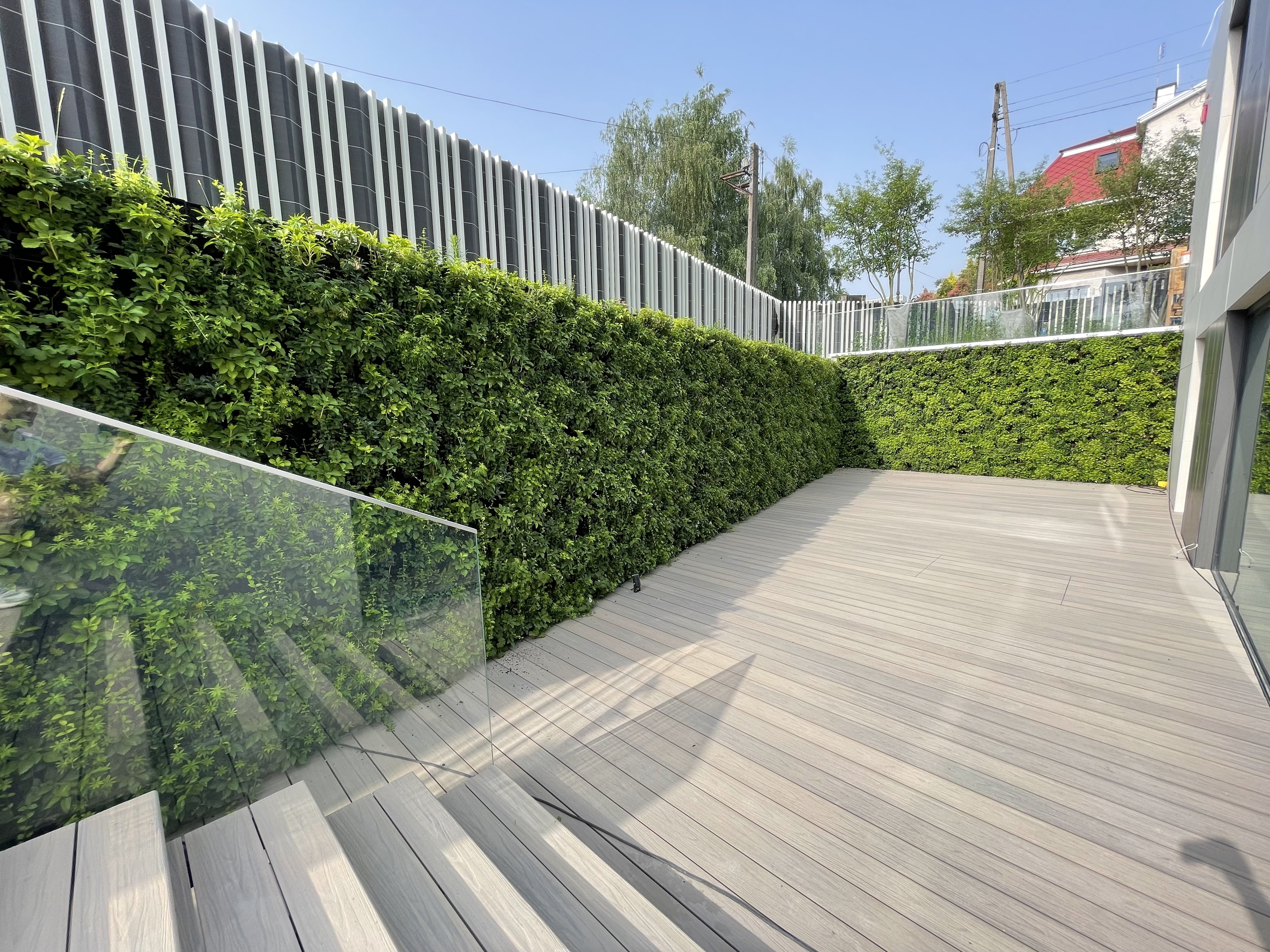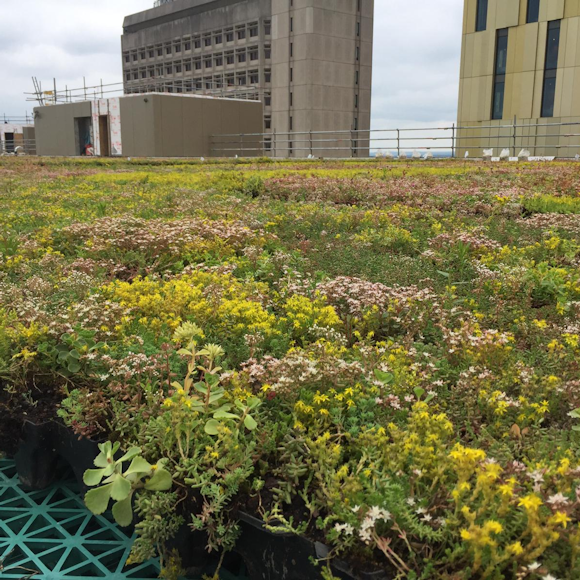As cities grow and space continues to become limited, many businesses and property owners are exploring creative ways to go green.
Living walls (also known as ‘green walls’) are one way this is being achieved. Installed to the interior and exterior of buildings, living walls offer various designs utilising a range of plants, and provide many benefits for both the environment and local community.
If you’re interested in learning more about living walls and how they could benefit your project, you’ve come to the right place. Read on as we explore everything you need to know about living walls.
Do I need planning permission for a living wall?
When looking to get a living wall installed, the first thing you’ll want to do is make sure you have the legal rights to do so.
In most cases where living walls are installed, planning permission is not required. However, it’s always advisable when making any kind of alteration to a building to contact your local planning department. On the chance that you do find planning permission is required, you’ll save yourself both time and money by getting the advice you need, including what your next steps should be.
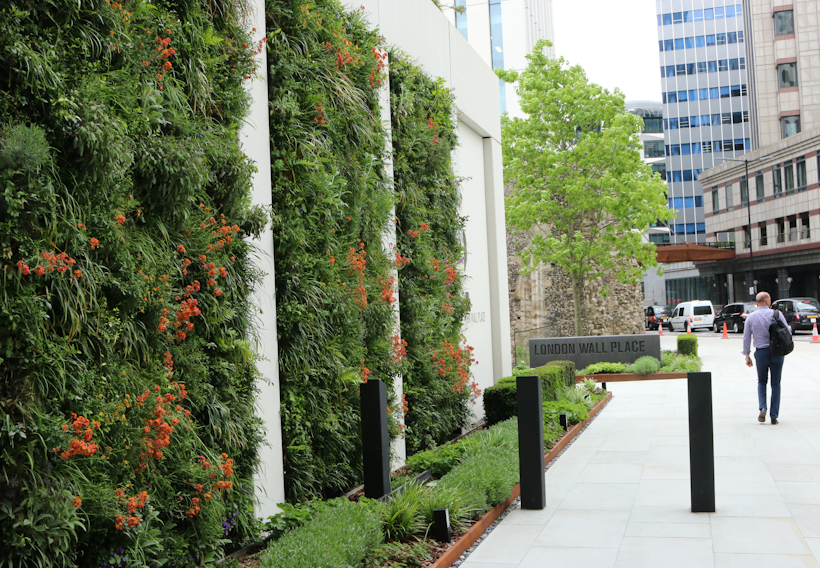
What types of living walls are there?
Living walls can be categorised into three types of common systems: tray systems, modular systems, and freestanding walls. But how do these systems differ? And what do they actually mean? By understanding each type of living wall system available, you’ll gain a better sense of their preferred application, which can be used to help identify which is best suited for the scope of your project.
- Tray living wall systems – Most commonly used for indoor environments, tray living wall systems use pre-grown plants off-site which are inserted into the wall. This allows for a great degree of design flexibility since the trays can easily be replaced.
However, since the plants are rooted in soil, tray systems can lead to bug infestations, fungus, and mould, so trays need replacing at least every month. - Modular living wall systems – For a longer-term solution, modular living wall systems can be used in any type of climate. They consist of pre-grown plants and benefit from advanced components such as drainage and irrigation systems to ensure a healthy living wall. At Viritopia, our modular system gives us the freedom to create living walls on all types of structures, even those that are curved. It’s also designed with root migration in mind, allowing plants to grow healthy with a longer lifespan.
- Freestanding living wall systems – Freestanding walls are smaller, movable systems which can be placed in either indoor or outdoor settings. They can be placed anywhere, whether it be against an existing wall, or in the middle of the room, and can be used as eco-friendly partitions or room dividers.
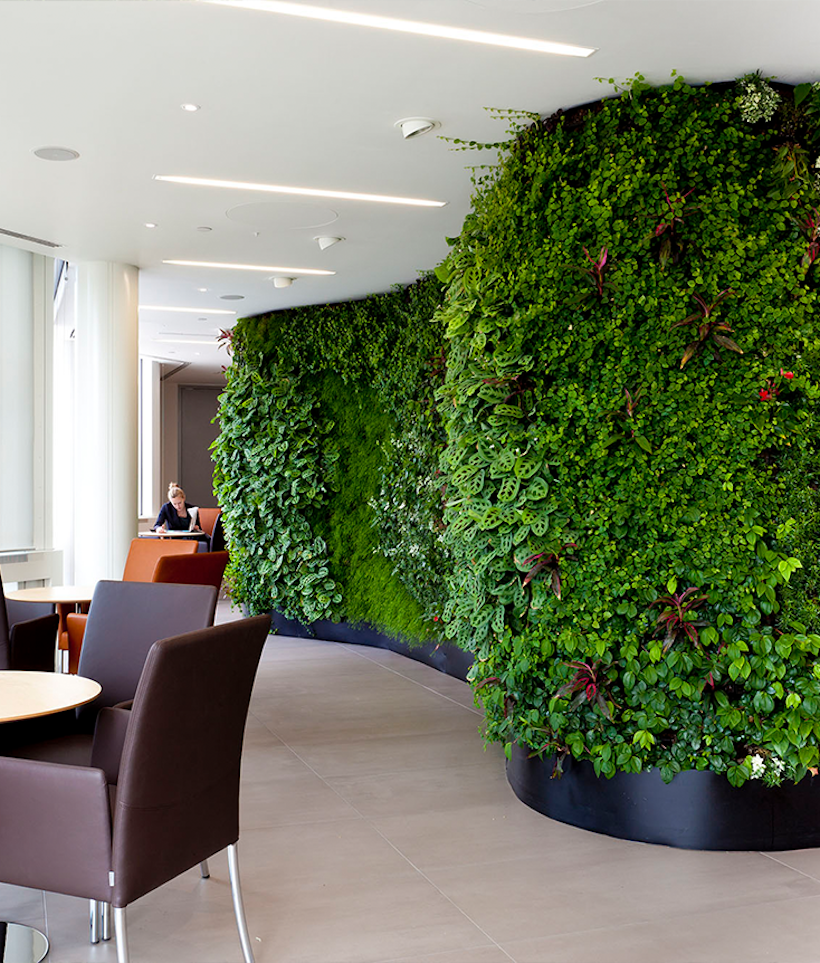
What are the benefits of living walls?
Living walls are more than just a natural beauty to look at. They serve many benefits for working and residential environments, which includes:
- Improved air quality – The plants in a living wall significantly improve air condition. By filtering particulate matter from the air, plants convert CO2 into oxygen which directly benefits people in the surrounding area. This is particularly useful for indoor offices prone to a ‘stuffy’ atmosphere. To put things into perspective, just 1m² of vegetation would generate the oxygen required by one person for an entire year.
- Reduced noise pollution – Whether installed to the interior or exterior of a building, living walls act as a sound barrier. In fact, research shows that living walls can absorb up to 40% of the sound waves.
- Regulated ambient temperature – Living walls absorb around half of the sunlight that reaches them, yet reflect only 30% back. This helps to regulate building temperatures, saving you money and electricity as a bonus.
- Boosted productivity – A greener space is generally more inspiring. Living walls can be used in working environments to boost productivity and motivate teams. The same goes for your home office too!
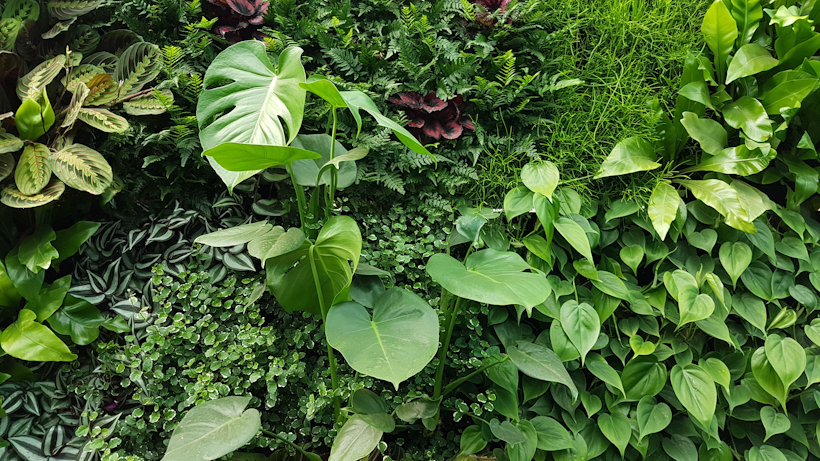
Living wall systems from Viritopia
Here at Viritopia, we specialise in providing all types of structures with integrated living wall solutions that have been carefully designed, installed, and maintained over the past 13 years. Whether you’re looking to add some natural beauty to your building, or want to reap the environmental benefits of a living wall, get in touch with our expert team today. We’re always happy to talk about your project requirements and answer any questions you may have about our complete service.
